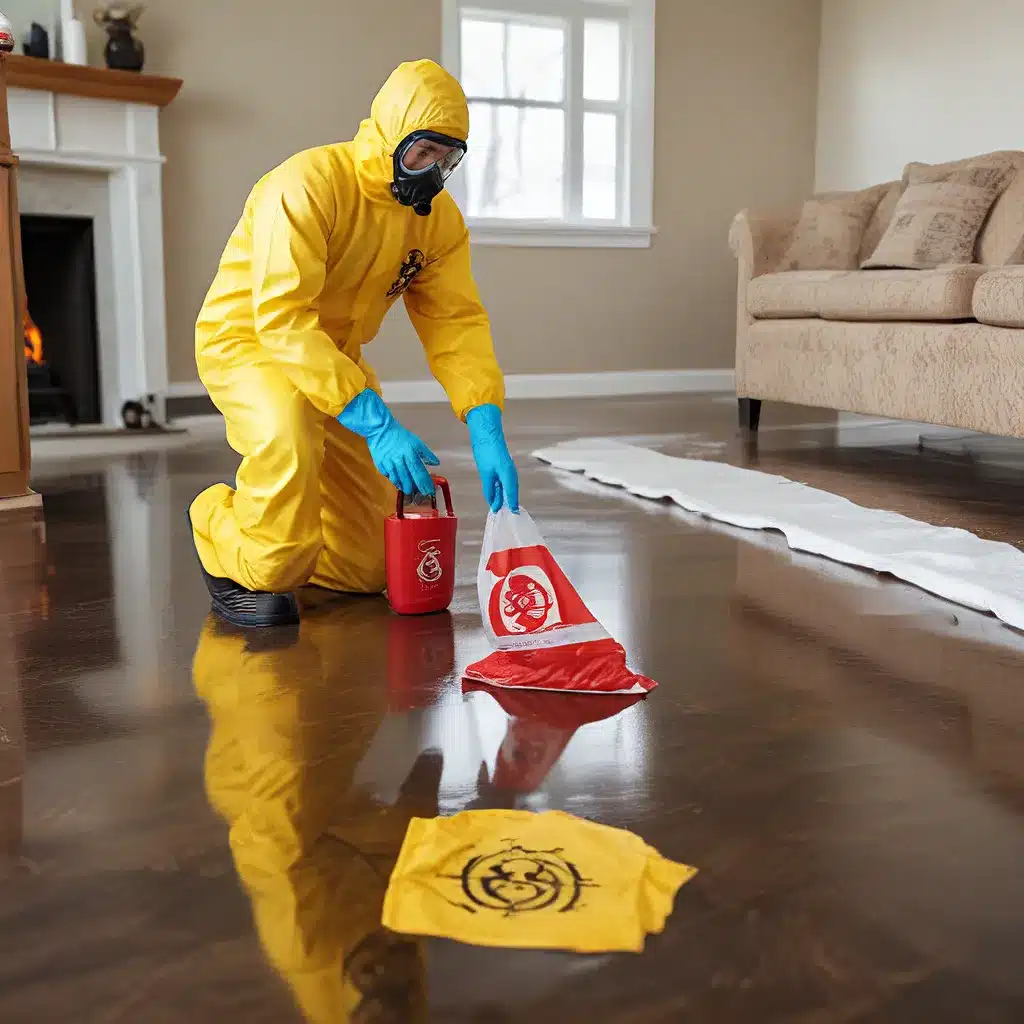Ah, the joys of homeownership – you never quite know what unexpected surprises may be lurking around the corner. And when it comes to biohazard spills, well, let’s just say those surprises can get a little…messy. But fear not, my friends! Today, I’m here to walk you through the proper procedures for tackling those tricky biohazard cleanups, right from the comfort of your own home.
Staying Calm and Calling for Help
First things first, let’s address the elephant in the room: biohazards. These can come in many forms, from bodily fluids to dangerous microorganisms, and they require a delicate touch. The key is to remain calm and focused – after all, panic never helped anyone clean up a mess, did it?
Now, the very first step is to assess the situation and determine if you need to call in the big guns. If the spill is small and manageable, you might be able to handle it yourself. But if it’s a large spill or involves potentially infectious materials, it’s time to bring in the professionals. Don’t hesitate to call 911 if the situation seems truly dire – your safety is the top priority.
Gathering the Right Gear
Alright, so you’ve taken a deep breath and decided to tackle this biohazard head-on. The next step is to make sure you have the proper equipment on hand. This includes things like rubber gloves, paper towels, and a spray bottle filled with a 10% bleach solution. And let’s not forget the all-important forceps for picking up any broken glass or sharp objects.
Now, I know what you’re thinking – a 10% bleach solution, really? Yep, that’s the magic number when it comes to disinfecting those nasty biohazards. But be sure to change the bleach solution every six months, as it can lose its potency over time.
Tackling the Spill
With your gear in hand, it’s time to get down to business. Start by covering the spill with absorbent material like paper towels or a micro-encapsulation absorbent. This will help contain the mess and prevent it from spreading.
Next, spray the affected area with your trusty bleach solution. Let it sit for a few minutes to work its disinfecting magic, then carefully wipe up the spill using the paper towels or absorbent material.
But wait, there’s more! Once you’ve removed the visible signs of the spill, it’s time to double-check the area for any sneaky stragglers. Use those forceps to pick up any broken glass or sharp objects, and give the whole area a thorough once-over to make sure nothing was missed.
Disposing of the Waste
Now that the hard part is behind you, it’s time to tackle the final step: disposing of the waste. Any materials used to clean up the spill, including the paper towels, gloves, and absorbent material, need to be treated as biohazardous waste.
Carefully place everything in a leak-proof, puncture-resistant container and seal it up tight. Then, contact your local waste management authority to find out the proper procedures for disposing of biohazardous materials in your area. Don’t just toss it in the regular trash – that’s a big no-no!
When to Call for Professional Help
Now, I know what you’re thinking – “But what if it’s a really big spill?” Well, in those cases, it’s best to call in the professionals. After all, some messes are just too big and too dangerous for the average homeowner to handle.
According to Purdue University’s guidelines, a large spill is defined as one that would require “more than one person, large amounts of decontamination equipment and material, and/or contamination of objects that would prove difficult to decontaminate.” And if you’re dealing with a major spill, like the kind you’d see in a homicide or suicide situation, it’s time to call the authorities and let the experts take over.
Staying Safe and Informed
At the end of the day, proper biohazard cleanup is all about staying safe, informed, and prepared. By following the right procedures and knowing when to call for help, you can tackle those unexpected spills with confidence and keep your home clean, healthy, and ready for anything.
But remember, knowledge is power. So be sure to stay up-to-date on the latest biohazard cleanup guidelines and don’t be afraid to reach out to the experts if you’re ever unsure. After all, your safety and the safety of your loved ones should always be the top priority.
So there you have it, folks – the inside scoop on how to tackle those tricky biohazard spills like a pro. Now go forth, stay calm, and clean on!







